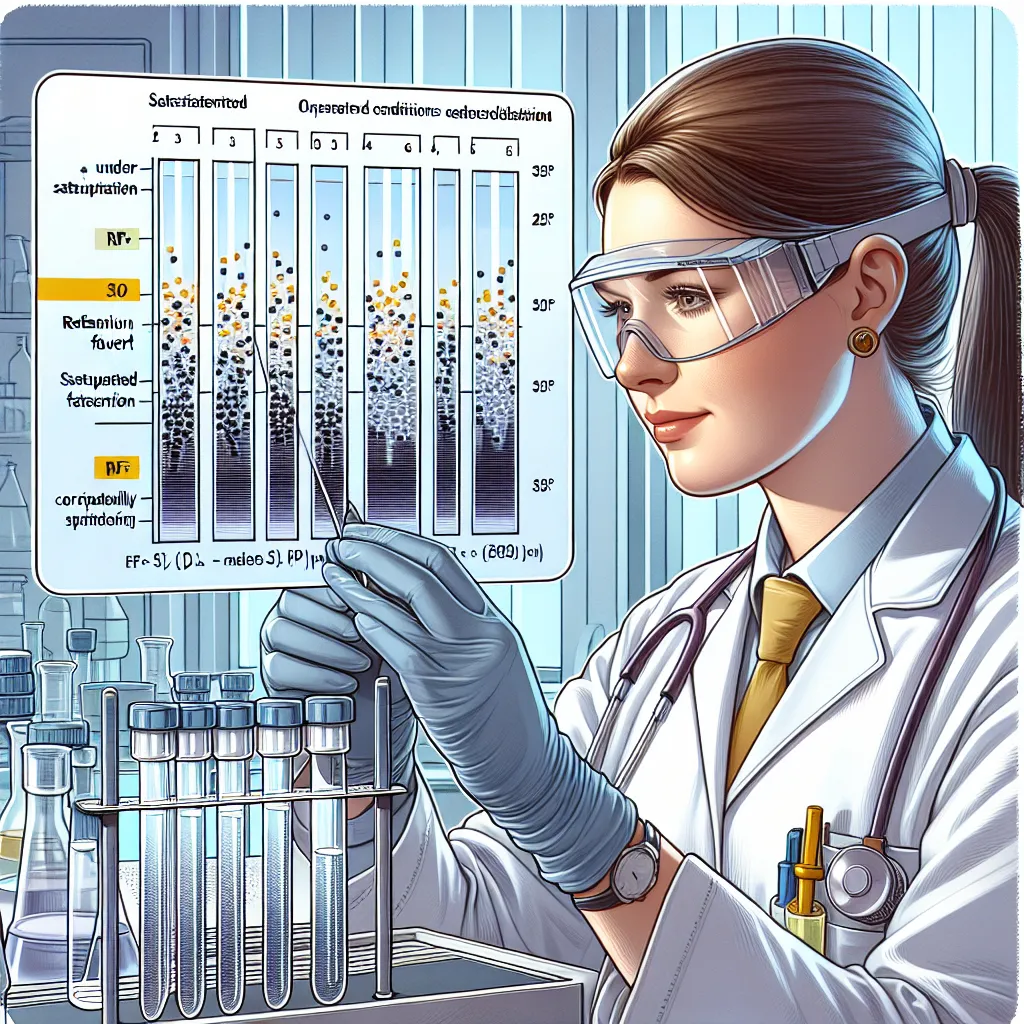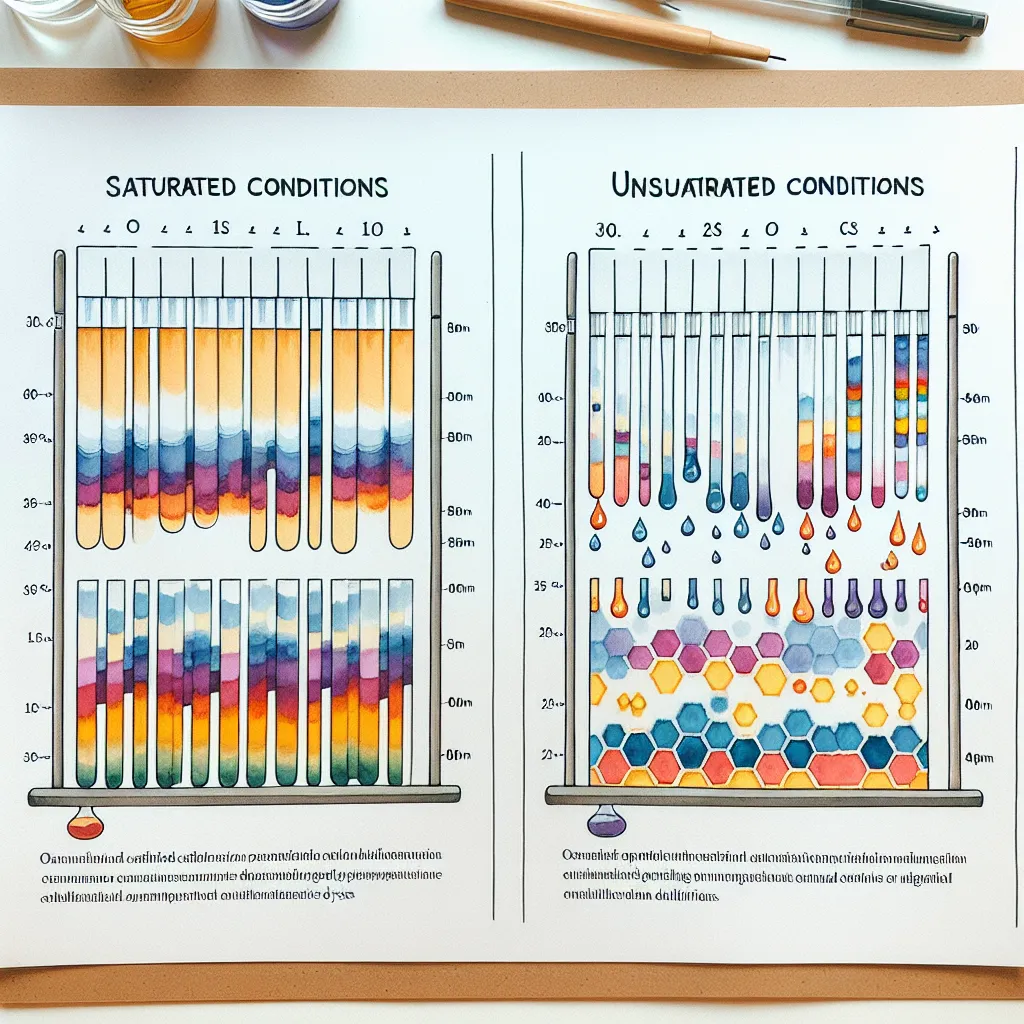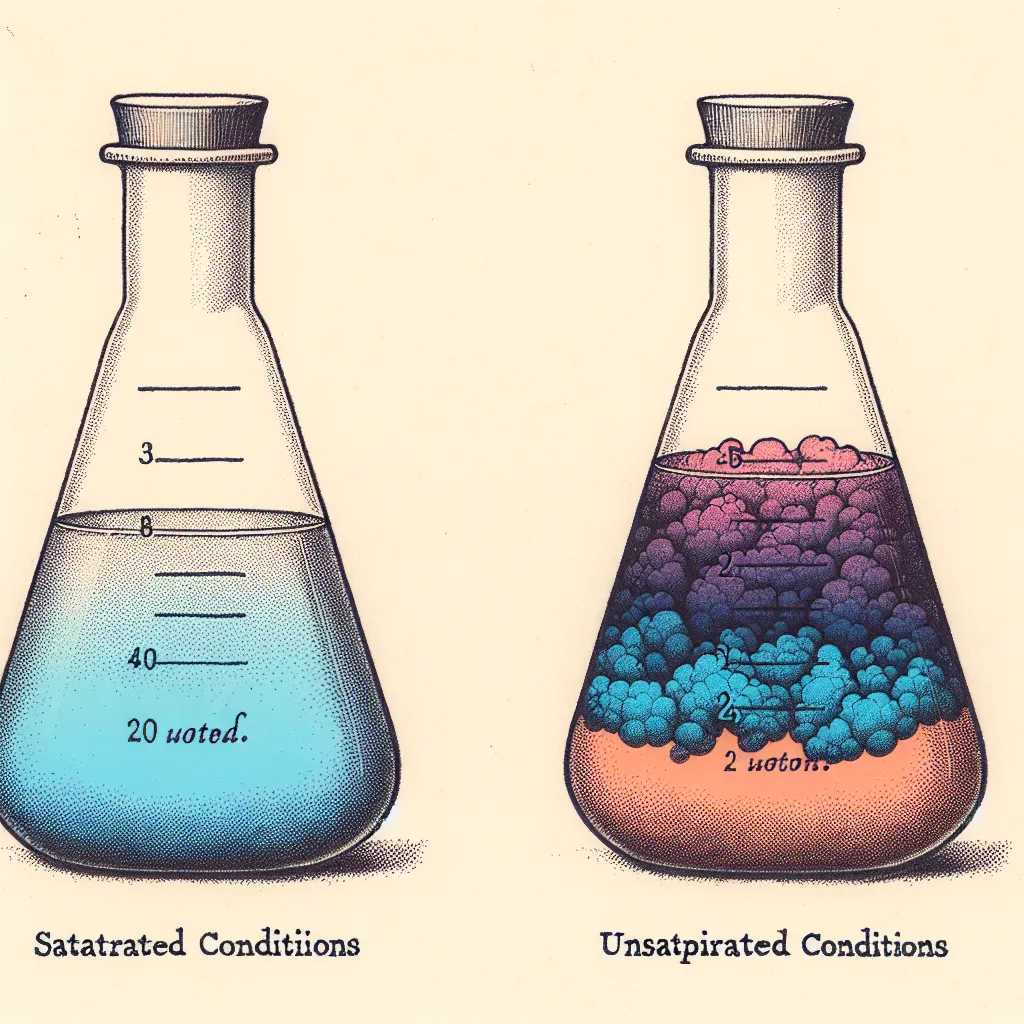Ask AI on The Internet
Question: a) Discuss briefly why there appear to be differences in RF values under saturated and unsaturated conditions of TLC.
Thin Layer Chromatography (TLC) is a widely used technique for separating and identifying compounds in a mixture. The Rf value (retardation factor) is a key parameter in TLC and is defined as the ratio of the distance traveled by the solute to the distance traveled by the solvent front. Rf values can vary under different conditions, and one notable distinction is between saturated and unsaturated environmental conditions. ### Saturated Conditions Under saturated conditions, the chromatography chamber contains a solvent vapor-saturated atmosphere, achieved by allowing the solvents to equilibrate in the chamber before running the TLC plate. This is often achieved by placing filter paper soaked in the solvent inside the chamber. - **Consistent Solvent Front:** The solvent front rises uniformly due to the balanced vapor pressure, promoting consistent and reproducible Rf values. - **Enhanced Solvent Mobility:** In a saturated environment, the solvent has an increased ability to mobilize compounds due to higher solvent vapor pressure. - **Less Solvent Evaporation:** Since the atmosphere within the chamber is filled with solvent vapor, there is minimal evaporation of the solvent from the TLC plate, leading to more controlled and consistent movement of the solvent front. ### Unsaturated Conditions In contrast, unsaturated conditions refer to a TLC setup where the solvent's vapor does not saturate the chamber's environment. - **Inconsistent Solvent Front:** The solvent front can move faster or slower in different areas of the plate due to uneven evaporation rates and lack of consistent vapor pressure, leading to less reproducible Rf values. - **Reduced Solvent Mobility:** Lower solvent vapor pressure means solvents are less efficient in mobilizing the compounds, which can affect the separation quality and the resulting Rf values. - **Greater Solvent Evaporation:** More rapid evaporation of the solvent from the plate can occur in the absence of a saturated atmosphere, further influencing the movement of compounds along the plate. ### Key Points of Difference 1. **Solvent Front Movement:** More uniform in saturated conditions; can be inconsistent in unsaturated conditions. 2. **Reproducibility:** Rf values are generally more reproducible under saturated conditions due to a controlled environment. 3. **Separation Quality:** Better separation and clearer distinction of compounds typically achieved under saturated conditions. 4. **Factor Control:** More factors (like temperature, humidity, and solvent vapor) need to be carefully controlled in unsaturated conditions, whereas the vapor saturation in a closed environment simplifies these concerns in saturated environments. ### Conclusion The differences in Rf values under saturated and unsaturated conditions are primarily due to variations in solvent vapor pressure, solvent front movement, and the control of the environment within the TLC chamber. Saturated conditions tend to provide more consistent and reproducible results due to the stabilized conditions, while unsaturated environments introduce variability due to uneven evaporation and solvent movement.
Think your answer is better than the AI's? Post it below.
Other Most Relevant Posts:
 Ask AI: a) Discuss briefly why there appear to be differences in RF values under saturated and unsaturated conditions of tlc
Ask AI: a) Discuss briefly why there appear to be differences in RF values under saturated and unsaturated conditions of tlc
 Ask AI: Discuss the separation of organic dyes under two different set of conditions: Saturated and unsaturated using THIN LAYER CHROMATOGRAPHY
Ask AI: Discuss the separation of organic dyes under two different set of conditions: Saturated and unsaturated using THIN LAYER CHROMATOGRAPHY
 Ask AI: Discuss the separation of organic dyes under two different set of conditions: Saturated and unsaturated
Ask AI: Discuss the separation of organic dyes under two different set of conditions: Saturated and unsaturated
Question Tags
If you want your question answered by an AI, click here.




Post your own comment: